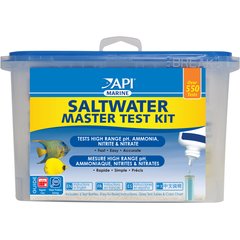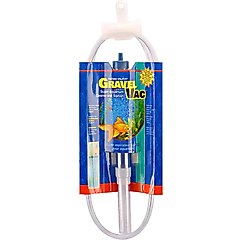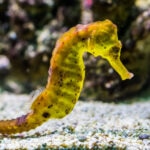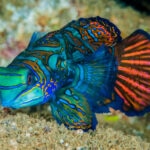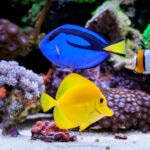Moorish Idol Fish Care Sheet
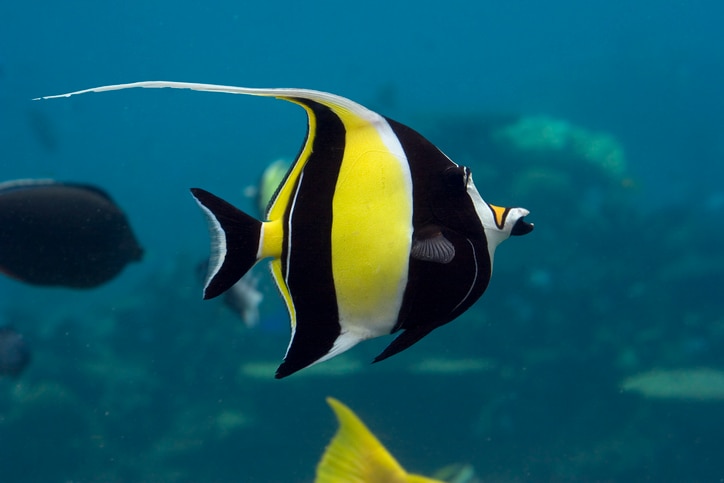
Photo by qldian/iStock/Getty Images Plus
Notorious as one of the most difficult saltwater fish to keep alive in captivity, the Moorish idol (Zanclus cornutus) exhibits striking bands of black, white, and yellow. Though stunning in appearance, this saltwater fish species requires care that can be challenging for even the most experienced aquarium hobbyists.
Key Takeaways
- The Moorish idol is a beautiful but highly challenging saltwater fish species best left in the wild or to expert aquarists.
- They require large, carefully maintained tanks with pristine water quality and reef-like conditions.
- Their sponge-based diet is difficult to replicate in captivity, making feeding a common issue.
- All Moorish idols in the trade are wild-caught, raising ethical and logistical concerns for home aquariums.
Species Overview
Scientific name: Zanclus cornutus
Lifespan: Unknown in captivity
Size at maturity: Up to 7 inches
Fun Facts
- Gill, leader of the Tank Gang in the movie “Finding Nemo,” was a Moorish idol.
- Moorish idols require an expert level of captive care, but even the most experienced aquarium hobbyists suggest they’re best left in the ocean.
- The Moorish idol was given its name by the Moors, a North African Muslim people who believed the species to be a harbinger of luck and prosperity.
Habitat
The Moorish idol’s rarity in captive aquaculture stands in contrast to their widespread distribution in nature. They’re quite common in tropical and subtropical reefs throughout the Indo-Pacific region, occasionally forming large, temporary schools to chase other species away from prime foraging grounds.
Mirroring the Moorish idol’s natural habitat in captivity can be a challenge. Relatively few hobbyists and even professionals have been successful, but those who have offer similar recommendations to those who hope to keep this species themselves.
Tank setup
Moorish idols are active fish best kept in pairs with plenty of space to graze for food and room to evade predators. The minimum recommended tank size for a pair of Moorish idols is 200 gallons, though larger tanks are preferred. When it comes to tank dimensions, aquarium hobbyists should prioritize length and depth over height
A thoughtful tank setup is crucial for minimizing stress and aggression in Moorish idols and other saltwater fish. Use decor to break up sight lines and create natural boundaries.
Hobbyists who have attempted to keep Moorish idols generally recommend a spacious reef tank setup, complete with live rock organized in a centralized, vertical stack.
Standard designs like end-to-end rock walls and sloping stacks may be too confining for this active species. A center stack with open pockets, on the other hand, will enable your fish to swim through and all the way around the rock.
Whether your Moorish idols are foraging for food or fleeing aggressive tankmates, they can take full advantage of the tank’s volume with this arrangement.
Cycling and stocking
Sparkling clean, well-oxygenated water with a fast flow rate is crucial for Moorish idols, so choose your filtration and aeration equipment carefully.
Because this species is highly sensitive to poor water quality and unstable parameters, it’s best to have your tank stocked and fully stabilized before introducing them.
Live rock plays a key role in cycling a saltwater tank and promoting ongoing stability. It serves as a natural biological filter, housing beneficial bacteria that process waste.
Live rock also houses the microfauna and invertebrates that make up a thriving reef environment and provide natural food sources for your fish.
Cycling a saltwater tank can take four to six weeks depending on the cycling method you choose and should be done before adding fish to your tank. Start with a source of ammonia, like fish food, and seed the system with live rock, live sand, or bottled bacteria.
Test your tank water daily to monitor its progress and add stock gradually once the cycle is complete.
Recommended Product
Stocking the tank in order with the least aggressive species first is the key to minimizing aggression and territorial behavior. Adding a few inhabitants at a time gives the biological filter time to adjust, preventing violent swings in water chemistry that could harm your stock.
Maintenance
Though reports of success keeping Moorish idols in captivity are few and far between, experienced aquarists’ advice can be boiled down to a single statement: Consistency is key.
If you don’t have the time or resources to commit to careful maintenance, Moorish idols may not be the right fit for your tank.
Daily maintenance tasks for a Moorish idol tank should include:
- Feeding fish
- Inspection of all fish
- Testing water temperature and specific gravity
- Topping off water lost to evaporation
- Quick inspection of heating and filtration equipment
On a weekly basis, it’s wise to test your tank’s ammonia, nitrite, nitrate, and phosphate levels using a saltwater aquarium test kit. If you’re keeping corals in your tank, you may also want to check the calcium level and alkalinity, and adjust as needed.
Wipe down tank glass, equipment housing, and power cords to remove salt spray, and rinse out the protein skimmer cup and any prefilter sponges.
Every two to four weeks, depending on the results of your weekly water test, you’ll also need to complete a partial water change. Use a gravel vacuum to remove accumulated detritus from the substrate, and top up the tank with prepared saltwater when finished.
Recommended Product
Diet
Dietary challenges are the most common point of failure for aquarium hobbyists attempting to cultivate this species. Moorish idols are often described as finicky eaters, but the reality is that many hobbyists struggle to provide a diet that’s both appealing and adequately nutritious for these fish.
Moorish idols are omnivores but feed primarily on sponges in the wild. While this species may graze on marine algae, coral polyps, and small invertebrates in an established reef tank, it’s difficult to grow sponges in sufficient supply to meet their needs.
Live sponges can also be tricky to source, and some fish simply won’t accept commercial substitutes.
Whether a Moorish idol will accept commercial foods is hard to predict. The key is to keep your Moorish idols eating however you can. Once they stop eating, they may never restart.
An ideal diet may consist of live sponge and coralline algae, supplemented with fresh or frozen meaty foods like mysid shrimp and clams. Moorish idols may also enjoy blanched terrestrial vegetable matter, and seaweed-based foods like nori and spirulina.
Acquisition
There’s no recorded evidence of Moorish idols breeding in captivity, so all specimens in the aquarium trade are wild-caught.
Not only does this raise certain ethical and environmental concerns, but it adds to the challenges of keeping this species alive in the home aquarium. Wild-caught fish tend to be less accepting of commercial diets, and they may be more sensitive to inconsistent aquarium parameters than captive-bred specimens.
The best way to improve your chances of keeping Moorish idols alive in captivity is to start with the healthiest, hardiest fish you can find. Look for a specimen that exhibits the following characteristics:
- Already eating well in captivity
- At least 3–4 inches in size
- No serious bodily damage
- Not showing symptoms of disease
Washed-out color is to be expected, as is some minor fin damage—especially to the trailing dorsal crest (which can grow back). It may take a few days for a newly captured fish to regain its color. However, if Moorish idols spend too much time in a suboptimal dealer tank, they could start to decline and be unable to recover.
When it comes to sourcing Moorish idols, experts generally seem to agree that fish collected from Hawaii, Mexico, and Costa Rica are the best options. Some suggest proximity plays a role here, as fish collected from these areas undergo relatively short transits to dealers in the United States.
Health
Even with proper care, Moorish idols are prone to disease. Inadequate diet, unstable conditions, and stress can weaken their immune system, increasing their susceptibility to bacterial, fungal, and parasitic infections.
Watch for these common signs of illness in aquarium fish:
- Loss of appetite
- Labored breathing
- Fin clamping
- Dull coloration
- Cloudy eyes
- Lethargic behavior
- Hiding more often
- Erratic swimming
- Bloating
Moorish idols are particularly susceptible to developing ulcerations in poor conditions. This species tends to lose their coloration at night and may rest near the bottom of the tank, but should resume normal coloration and activity at daylight.
Should your Moorish idols start showing signs of illness, consider consulting an experienced aquatic veterinarian. It’s important to get an accurate diagnosis before starting treatment. Moorish idols are sensitive to copper-based medications, so use quinine-based treatments instead when possible.
It’s important to quarantine new livestock before introducing them into your main tank. With Moorish idols, however, the stress of an additional transfer and extra time spent in suboptimal conditions could be deadly.
Ideally, you’ll have a quarantine tank matching your Moorish idol’s requirements ready and waiting. If not, try to minimize their stay before acclimating them to their long-term home.
Supply Checklist
Moorish idols are most likely to thrive in an established, well-maintained saltwater tank. Here are the supplies you’ll need to cultivate an appropriate captive environment:
- Tank and stand
- Filtration system
- Aeration equipment
- Protein skimmer
- Reef-quality lighting
- Heater and thermometer
- Substrate
- Live rock
- Salt mix
- Hydrometer or refractometer
- Saltwater aquarium test kit
- Bacteria additive
- Water conditioner
- Maintenance tools
- Copper-free fish medications
- Fish food
FAQs About Moorish Idols
Where do Moorish idol fish live?
The Moorish idol fish is one of the most widely distributed reef species, found throughout the Indo-Pacific region and in the tropical eastern Pacific. These fish typically prefer flat coral reefs and have been found at depths ranging up to 600 feet (182 meters).
What eats Moorish idol fish?
In their native habitat, small Moorish idols are subject to predation by sharks as well as larger fish like angelfish, surgeonfish, and rabbitfish. Though fully grown specimens are less likely to become prey, the trailing crest of their dorsal fins can be damaged by aggressive species, such as triggerfish, tangs, wrasses, and pufferfish.
Is a Moorish idol an angelfish?
No, the Moorish idol is not an angelfish (family Pomacanthidae). While it shares a similar flattened body shape and pointed fins, Moorish idols belong to their own taxonomic group (family Zanclidae) and are actually more closely related to surgeonfish (family Acanthuridae).
Do Moorish idols do well in captivity?
According to the MarineBio Conservation Society, Moorish idols typically do not fare well in captivity. Even expert aquarium hobbyists who have dedicated considerable time and effort to keeping Moorish idols report survival rates well under 50%.
This species is highly sensitive to poor conditions, and requires a sponge-heavy diet that can be difficult to sustain naturally or replicate with commercial foods.
Attributions
Expert input provided by Veronica Pardini, DVM, a certified aquatic veterinarian at Wildside Veterinary Health Center serving areas in and around Broward and St. Lucie Counties in Florida.
